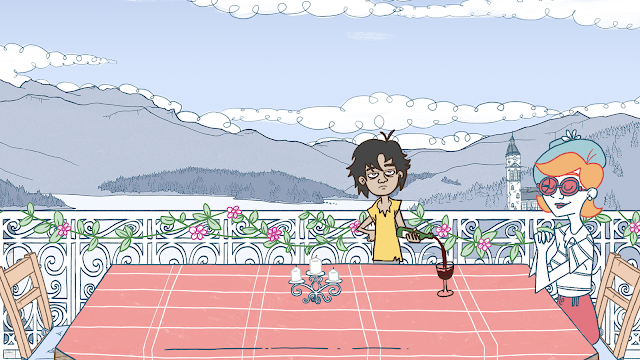- The bulk of my time spent on production of my animation was in the realisation of the animatic.
- Animatic is arguably the most important stage of realisation as it is the key framing and body language of the characters which is the most important aspect of the animation, as it is this which conveys the story to the audience. The animation is entirely non verbal.
- I initially contemplated using TV Paint but settled on Photoshop as I am most familiar with it and this would optimise my workflow.
Preliminary Animatic/ Storyboards
Animatic
Final Animation
- My preliminary animatic served as the framework upon which I built my more refined animatic and subsequently my finished animation.
- My keyframes would served essentially as the first pass of my animation, determining the timing of character action and pace of a scene.
- After constructing an animatic of the scenes as they play out in Key poses, my second pass was dedicated to adding in-betweens, overlapping and secondary action as well as filling in the characters and some of the foreground and background elements (depending on the scene).
- The final pass was dedicated to recolouring the linework on characters, (characters have differing colour motifs for their linework) additional colouring, line cleanup as well as adding finer details such as the shadow cast on the table in the example above.
- A bulk of the time was spent ensuring linework of initial keys were of a high quality to minimise cleanup and subsequently optimise workflow.
Animatic: Scene keyed out, background/foreground elements added, lighting keyed.
Final Animation: Colours filled in, linework refined, details (more blood) added, elements which didn't work (bones too small) removed based on peer feedback






No comments:
Post a Comment